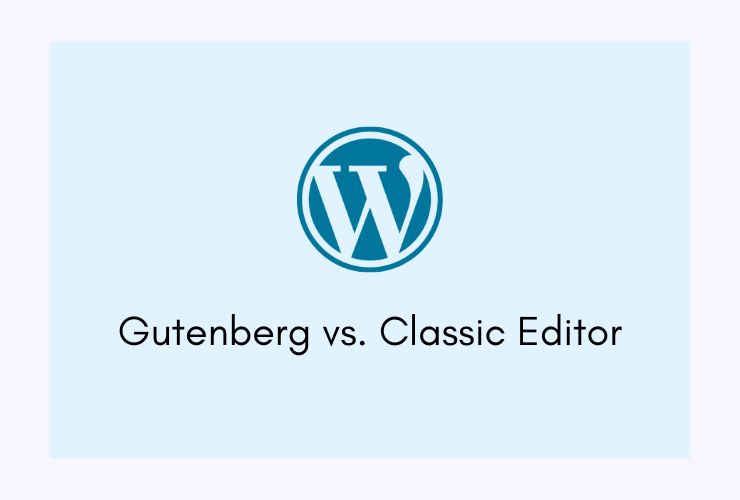WordPress runs 40% of all websites, and how you edit content can shape your site’s success. While Gutenberg offers a modern, block-based experience, many still rely on the Classic Editor for its straightforward, familiar workflow.
In the event that you are choosing between the two, this post details the advantages and disadvantages, and best uses of each editor to allow you to make a well-informed choice that works for your site.
What Is Gutenberg?
Gutenberg is the new block editor that comes with WordPress 5.0. Gutenberg is built on a modular block-based design where you visually design and build content. Every item—text, images, videos, buttons, or widgets—is handled as a block so that you get more design control without custom code.
Key Gutenberg Features:
- Block-based design: Content is placed in separate, movable blocks.
- Reusable patterns: Simplify content creation with block patterns and reusable templates.
- Real-time preview editing: View your design in real time while editing.
- Wide compatibility: Included with Full Site Editing and new theme support.
- Embed and multimedia support: Insert YouTube, Twitter, Spotify, and more with ease.
Advantages of Gutenberg:
- Better creative freedom without the need for third-party page builders.
- Best suited for dynamic pages, portfolios, eCommerce product structures, and landing pages.
- Enables non-technical users to create refined layouts with little effort.
Drawbacks of Gutenberg:
- Learning curve, particularly for users familiar with Classic Editor.
- Plugin/theme incompatibilities can arise with old assets.
- Performance can be sluggish on low-powered hosting configurations.
What Is the Classic Editor?
The Classic Editor offers a word processor-like editing experience. It is fast, easy, and favored by users only interested in writing content without much regard for design layout.
Key Features of the Classic Editor:
- Easy interface: One main content box, one toolbar, and HTML view.
- Plugin compatibility: Easy compatibility with older WordPress plugins.
- Meta box support: Ideal for sites based on custom post types and ancient workflows.
Pros of Classic Editor:
- Fast and clean editing process.
- Solid performance on all forms of hosting.
- Ideal for long blog posts, article publishing, or content-centric sites.
Cons of Classic Editor:
- Very restricted layout control—manual HTML/CSS required for custom design.
- Less future-proof—WordPress core points future development towards Gutenberg.
- Not intuitive for building media-rich pages or interactive content.
When to Use Gutenberg
- You’re building a brand-new site using a new theme.
- You need to build interactive, media-enriched landing pages.
- You want more control over visual design without falling back on plugins like Elementor.
- You will be leveraging Full Site Editing for headers, footers, and custom layouts.
Example Use Case:
A digital marketing agency builds a site with service pages, testimonials, in-line video embeds, and custom calls-to-action. Gutenberg makes it easy for them to build sophisticated, professional layouts without hiring a developer.
When to Use the Classic Editor
- Your team is used to the old interface and needs minimal disruption.
- Your workflow uses plugins that are not Gutenberg-updated.
- Your priority is high-volume blogging, news publishing, or text content.
- You are dealing with a content team that is more inclined toward speed and simplicity than toward design flexibility.
Example Use Case:
A news website publishes 5–10 articles daily with dense text content. Writers need a distraction-free, speedy setup. The Classic Editor offers speed, consistency, and familiarity.
Can You Use Both Editors Together?
Yes. You can install the Classic Editor plugin, which allows you to toggle between editors on a per-page or per-post basis. This is perfect if:
You wish to transition to Gutenberg incrementally.
Some content (such as product pages) is improved by blocks, but others (such as blog posts) are simpler in Classic Editor.
You’re working with several contributors with varying levels of comfort.
Other plugins such as Editor Switcher and Advanced Custom Fields (ACF) also increase editor flexibility and compatibility.
Performance and Compatibility Considerations
Prior to committing, take into account your hosting environment, theme capabilities, and third-party plugin support.
- Gutenberg is best suited for sites employing contemporary, block-compatible themes.
- Classic Editor excels on light sites or sites with a large number of legacy elements.
If you’re doing WooCommerce, membership websites, or custom post types, test very thoroughly in Gutenberg before fully converting.
Future Vision
Although the Classic Editor plugin will be supported until at least 2026, WordPress development pace is in Gutenberg. Future additions like Full Site Editing, global styles, and block-based widgets are dependent upon the block editor.
If you desire your site to expand and develop alongside the WordPress environment, Gutenberg is the future-proof solution.
Conclusion
Gutenberg and Classic Editor both have their merits. Gutenberg provides you with freedom of design, innovative features, and scalability. Classic Editor provides speed, simplicity, and writing-first workflows. The decision depends on your purposes, content, and user preferences.
For most, a hybrid approach—using both editors where most effective—is the most sage answer to bridge past and future of WordPress.
Contact Us Today













 Database Development
Database Development












































